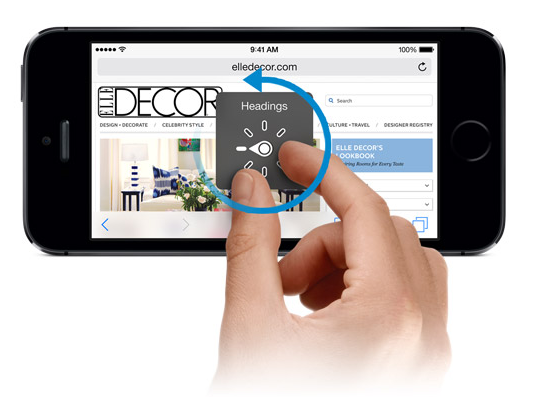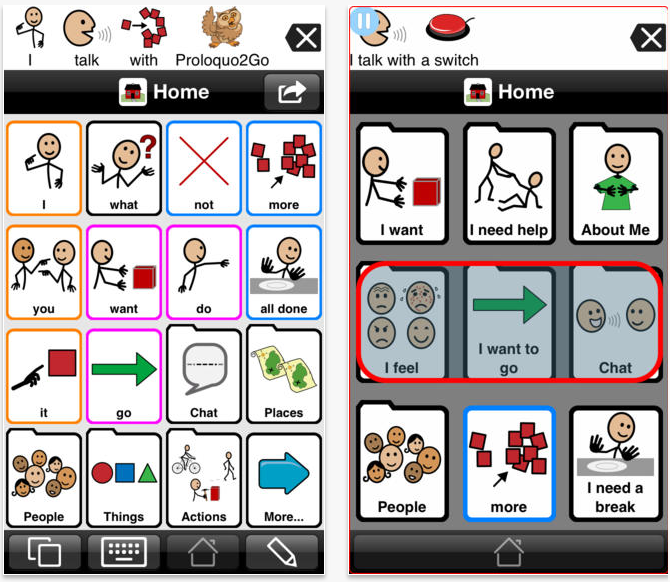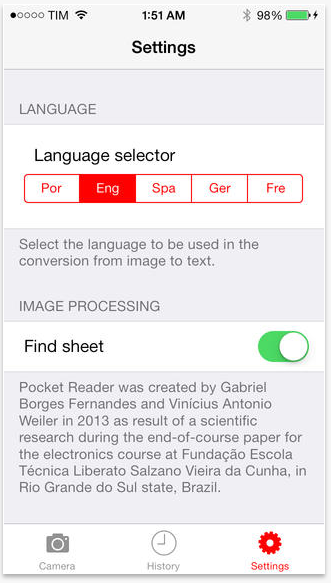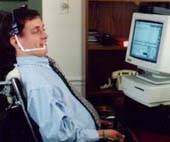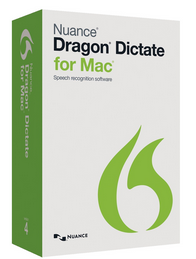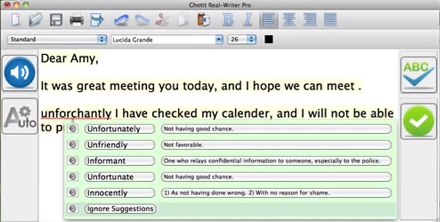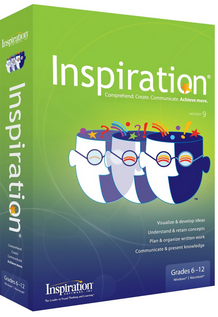Key Takeaways
- Assistive Technology (AT) is not limited to screen readers but includes a wide range of products, equipment, and software that aid users in performing tasks that are otherwise difficult due to vision issues, hearing loss, cognitive disorders, and other challenges.
- Examples of AT include Refreshable Braille Display, Screen Magnifiers, iOS VoiceOver, Proloquo2Go, ToggleKeys, Pocket Reader, Headmaster Plus, Reading Machines, Speech Recognition Software, Reader and Writer Software, and Mind-Mapping Software. These tools cater to the needs of various users, from the visually impaired to those with cognitive difficulties or limited manual dexterity.
- Assistive Technology is crucial in making digital content accessible to all users. Web developers and designers can enhance accessibility by using meaningful alt text for images, ensuring the site is navigable using only a keyboard, using clear and simple language, and structuring content logically.
If you’re a web developer/designer you probably come across the the acronym ‘AT’ or Assistive Technologies in your work. It’s tempting to think of ‘AT’ as just another name from screen readers – but this isn’t necessarily the case.
In fact, Assistive Technologies include a surprisingly wide range of products and software, outside of the conventional screenreader. So, today I thought we might expand the general idea of what qualifies as ‘AT’ and highlight some less commonly talked about examples in this category.
But first let’s define exactly what we mean by ‘Assistive Technology’.
Assistive Technology refers to a product, equipment or software which helps a user perform functional tasks which are difficult to do otherwise. The growing need for this technology arises due to the increasing numbers of people dealing with vision issues, hearing loss, cognitive disorders and other challenges. I have included listed some of these statistics under one of my articles on accessibility.
Refreshable Braille Display
This assistive technology is an electromagnetic device for displaying Braille characters developed by Louis Braille nearly 200 years ago.
Usage: Useful for Visually Impaired users to read text through round-tipped pins raised through holes in a flat surface.
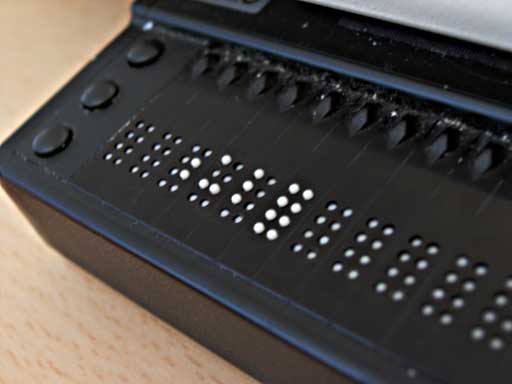
Screen Magnifiers
Microsoft Windows comes with a built-in application for Screen Magnifiers. This application has actually been a part of Windows since Windows 98, though there are certainly many third-party products that perform a similar task. The below figure shows a screen-magnifier operating on sitepoint.com
Usage: Useful for vison-impaired users, allowing them to easily increase the visible detail on any web page or application with their system.
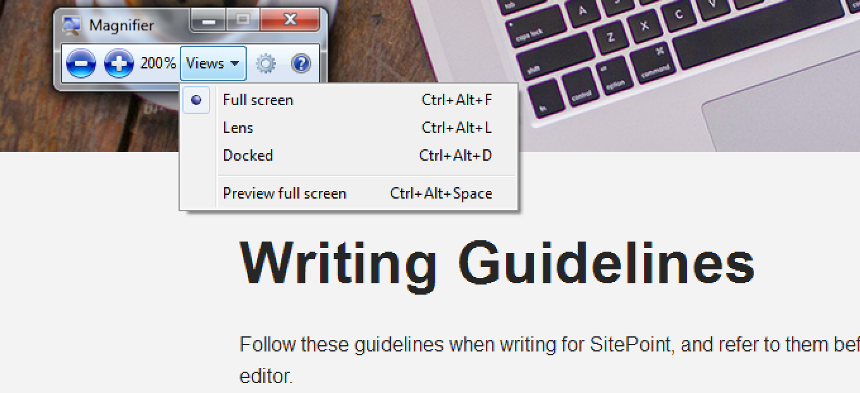
iOS VoiceOver (Touch Access)
Apple have invested a lot in their iOS accessibility features. VoiceOver is an interface built around a strong focus on the use of touch and gestures. This is certainly a variety of screen reader, albeit one centered around touch.
VoiceOver includes a novel ‘Rotor’ feature which allows users to ‘dial’ into different navigation paths through the page — for instance, by either headings, links or images. It includes built-in voices for 30 languages. VoiceOver can output to a bluetooth wireless braille display.
Usage: Users can navigate applications by using broad gestures. It includes an extensive suite of features such as text-input, braille displays, international voices etc.
Proloquo2Go
The Proloquo2Go site describes its product as:
“The voice for those who don’t speak.”
Proloquo2Go is a communication app that provides vocal abilities to those who can’t speak, by tapping buttons, word prediction, and verb and noun inflections. This is increasingly important as speech driven interfaces become more and more common place in our lives.
ToggleKeys
We’ve all, at some stage, accidentally left the caps-lock on when typing. While it’s an irritation for most of us, it becomes a bigger issue for low-vision users, who may not detect the problem for much longer periods than other users. This is most obviously a huge issue in case-sensitive input fields.
ToggleKeys is an accessibility function designed by Microsoft for users who are either visually or cognitively impaired. The computer will produce sound cue alerts when either Caps-lock, Num-lock, and Scroll-lock keys are engaged.
| Key | Sound |
|---|---|
| On | high-pitched sound |
| Off | low-pitched sound |
Pocket Reader – Printed Text for the Visually Impaired
This application converts printed texts into a digital format, before reading them back with Voiceovers. It’s compatible with iPhone, iPad, and iPod touch.
Pocket Reader can also convert its output to English, French, German, Portuguese and Spanish making it just as useful for any traveller.
Usage: This products has been developed for visually impaired users to help them by converting printed text into digital – this text is then read aloud like a voiceover.
Headmaster Plus
Headmaster Plus is head pointing control system for those who may have reduced dexterity in their hands, but have good head control. It is a technology that allows complete mouse control of a computer through head movements and even eye movements.
Headmaster Plus allows users to:
- watch and follow the pointer
- control the movement of head in small increments, and
- understand basic computer navigation.
Reading Machines
Reading Machines use a camera or scanner with Optical Character Recognition (OCR) software. They convert printed material into a more accessible electronic format, which can then be read aloud to the user.
Speech Recognition Software
Dragon Dictate is speech recognition software for Mac OS that enables you to dictate, edit, transcribe and control the computer through your voice.
Tasks that can be performed include:
- Clicking on a link
- Opening emails
- Composing and replying to emails
- Mixing and matching transcribing from different recording sources
Usage: It provides accurate speech recognition with customisable capabilities which is beneficial for users with cognitive difficulties, as well as users with limited manual dexterity. As an additional feature, the application can transcribe audio files.
Reader and Writer Software
Ghotit Real Writer Pro is a reader and writer software being developed for users with dyslexia and dysgraphia.
Its features include:
- Grammar Checker
- Phonetic spell checkers
- Word Prediction
- Proofreader
- Provides dictionaries of UK, US, Australia, Canada, South Africa and New Zealand.
Usage: Ghotit helps kids with dyslexia and dysgraphia by correcting spelling and literacy issues commonly associated with the condition.
Mind-Mapping Software
This one might come as a surprise.
Inspiration 9 is Mind-Mapping software that provides a platform for thinking which includes visual mapping, outlining, writing, making presentations.
A blank mind map is created by choosing from templates for different subjects, such as mathematics or science. The thinking and planning process begins, encouraging users to pull together different ideas and themes in no particular order or structure, before the software helps them organise disparate threads into a more cohesive work.
This mind map can then be transformed into a more conventional outline at the click of button.
Usage: While almost anyone can benefit from mind maps, they have been found to be particularly useful for dyslexic users.
Do you know some other ones?
If you’ve used any other assistive technology beside screen-readers that you believe deserves a mention, please mention it in the comment section.
Frequently Asked Questions (FAQs) about Assistive Technology and Screen Readers
What is the difference between assistive technology and screen readers?
Assistive technology is a broad term that encompasses a variety of devices, software, and tools designed to help individuals with disabilities perform tasks that they may otherwise find difficult or impossible. Screen readers, on the other hand, are a specific type of assistive technology. They are software programs that convert text on a screen into audible speech, allowing visually impaired or blind individuals to access digital content.
How do screen readers work?
Screen readers work by scanning the content on a screen and converting it into speech or Braille. They can read out everything from text to images, links, and even metadata. This allows visually impaired users to navigate websites, read documents, and use applications.
Are all screen readers the same?
No, not all screen readers are the same. They can vary in terms of the features they offer, their compatibility with different operating systems, and their ease of use. Some popular screen readers include JAWS, NVDA, and VoiceOver.
Can screen readers interpret images?
Screen readers cannot interpret images directly. However, they can read out the alternative text (alt text) associated with an image. This is why it’s important for web developers to include meaningful alt text for all images.
How can I make my website more accessible for screen reader users?
There are several ways to make your website more accessible for screen reader users. This includes using meaningful alt text for images, ensuring your site is navigable using only a keyboard, using clear and simple language, and structuring your content logically.
What other types of assistive technology are there?
Besides screen readers, there are many other types of assistive technology. This includes magnification software, speech recognition software, alternative input devices, and refreshable Braille displays, among others.
How can I learn to use a screen reader?
Many screen reader manufacturers offer tutorials and guides on their websites. There are also numerous online resources and communities where you can learn from other users’ experiences.
Are screen readers expensive?
The cost of screen readers can vary. Some, like NVDA, are free, while others, like JAWS, can be quite expensive. It’s important to research and compare different options to find one that fits your needs and budget.
Can I use a screen reader on my mobile device?
Yes, most modern smartphones and tablets come with built-in screen readers. For example, iPhones have VoiceOver, while Android devices have TalkBack.
How can I support someone who uses a screen reader?
If you’re designing a website or creating digital content, make sure it’s accessible. If you’re interacting with a screen reader user, be patient and understanding. Remember, they may interact with technology in a different way than you do.

